The mighty Po flows for 400 miles across Italy and in many ways defines the north of the country. Penny Wainwright visits the area where it meets the sea…
Photos by Penny Wainwright
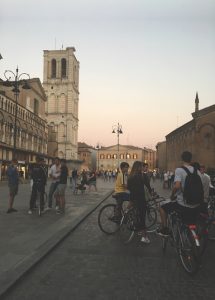
The Renaissance city of Ferrara and the River Po Delta are a UNESCO World Heritage Centre, linking Ferrara, the Delta and its landscape. My 48-hour visit began after a short drive from Bologna airport to Ferrara. I arrived in the evening and walked from my hotel into the centre. I passed Via delle Volte, a street with arched passageways which ran parallel to the River Po. These passageways connected merchants’ houses to their riverside warehouses. Ferrara was buzzing with bars and restaurants filled with people. I sat outside Enoteca al ‘Brindisi’ in a narrow street of bars, enjoying a drink in the warmth of the evening.
Next morning I explored the medieval city between the River Po and the red-brick Castello Estense. Construction of the castle began in the late 14th century, creating a fortress and palace for the d’Este family with towers and drawbridges across a water-filled moat. The city was designed to be an elegant place with green spaces, showcasing the importance of the d’Este dynasty. Inside the castle, the Ducal apartments were adorned with frescoes. A roof garden provided a private and relaxing space for the d’Este ladies. Orange trees add scent and colour to the roof terrace, while the decorative brickwork provides a view onto the town. Outside the castle are statues of Nicolò d’Este on horseback and his son Borso on a throne flanking the main entrance to the Palazzo Municipale.
Opposite the Palazzo is the Basilica di San Giorgio, dedicated to Ferrara’s patron saint. It is undergoing repairs following the earthquakes of 2012 and the façade is currently hidden, but the marble portico and loggia have impressive biblical and historical scenes decorating them. Around the side of the cathedral, in Piazza Trento Trieste, is the Loggia dei Merciai and the striped 15th-century Campanile. From here I walked to Via Mazzini and the Ghetto, where Jews had a long period of freedom under the d’Este rule. In 1943 the entire Jewish community fled from Ferrara; however, some Jews now live in the city again.
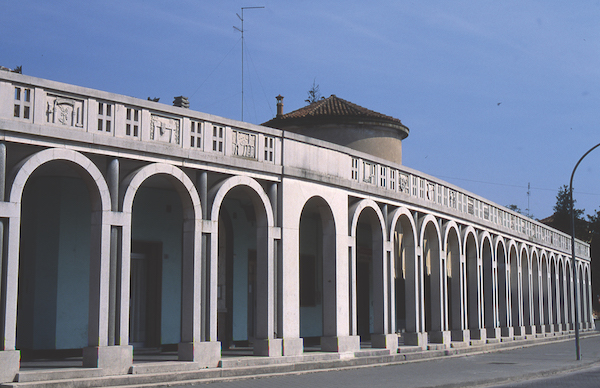
The Po Delta Park
I reluctantly left Ferrara to explore the Po Delta Park. The 400-mile-long River Po emerges in the Alps and crosses northern Italy before flowing into the Adriatic Sea. With ten tributaries and channels, the Po has islands, forests, towns and villages, flood plains and nature reserves along its banks and in the Delta. I made a short detour to Tresigallo, a medieval village, that was rebuilt in the 1920s and ’30s. Its ‘Rationalistic’ architectural style was the inspiration of the Fascist agriculture minister Edmondo Rossoni. The village has been given the title of Città d’Arte as an example of an Italian modern town.
My next stop, Comacchio, is known as ‘Little Venice’, with its canals and a lagoon. This small town has been built on fishing, salt and eels. I walked from the Santuario di Santa Maria under 143 arches of the Loggiato dei Cappuccini to La Manifattura dei Marinati, an eel-pickling factory and museum. Eels are still caught in v-shaped channels in the lagoon and then kept submerged in large woven baskets. In the past, eels were roasted on spits in the factory before being pickled and canned. Women worked long hours standing beside open fires, turning the eels on the spits. The factory continues to cook, marinate and sell eels.
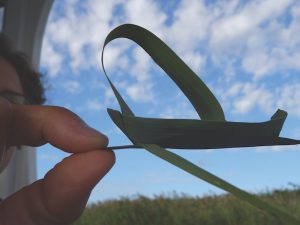
I went to Trattoria Le Gresine on a canal close to Trepponti for lunch. This is a traditional trattoria and was busy with lunchtime diners. I was keen to try the local grilled eel with polenta, which was served with prosecco. The eel had an unusual taste, quite bony and oily, but I enjoyed it. The town was busy with people sitting and relaxing near the Loggia dei Mercanti, the old grain market, the campanile and Canale Maggiore. On the canals, batane (flat-bottomed boats) were used in the past. Today, restaurant boats float on the canals between the pastel-coloured houses. There are ten brick-built bridges, with the most unusual being Trepponti. This was built in 1634 with five sets of wide steps crossing the canals. Alongside one of the canals is the Museo Delta Antico. After lunch I went by boat on the lagoon, the Valli di Comacchio. This covers 14 square miles of wetland and marshes. There are restored fishing lodges with large suspended nets around the lagoon. When the boat neared the old salt pans, I walked along the cycle path on the bank and was surprised to see flamingos wading and eating in the distance. Bird watching, cycling and photography trips can be arranged from Comacchio.
In the late afternoon I stopped at Corte Madonnina to sample some vini delle sabbie, from vines that grow on the Po Delta’s sandy soil. The soil from the Po di Goro to Comacchio grows Merlot, Fortana and Sauvignon grapes. Insula Pomposiana, an IGP wine, is named after the area around Pomposa Abbey where it grows. Tasting DOP and IGP white and red wines was a great way to end the afternoon. A few minutes away my night’s accommodation was Resort Oasi Bianca in Codigoro. In the Il Pentagramma restaurant I had a delicious dinner of mussels, tortellini di zucca and fritto misto di pescato, served with local wines.
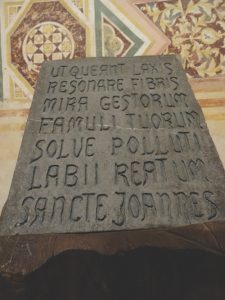
Benedictine monks
Next morning I visited Pomposa Abbey, close to Oasi Bianca. This had been an important abbey in the Middle Ages with up to a hundred Benedictine monks living there. Their motto was Ora e lavora, pray and work, as they prayed from early morning until late at night. In the 11th century, Guido d’Arrezo invented modern musical notation at the Abbey by combining text and musical notes. This meant music could be learnt by sight-reading. He was inspired by a prayer and used the first letter at the beginning of each line to create the scales. Inside the Abbey there are frescoes and mosaic floors, while outside it is decorated with coloured bricks and ceramics, reminiscent of Eastern styles of decoration. The 48-metre Campanile once guided pilgrims travelling along the Via Romea towards Rome. Now it is possible to climb the steps to the top of the tower at weekends.
Country palace
After visiting the d’Este castle in Ferrara, I was keen to see one of their country palaces, the Delizie Estensi. Castello Estense di Mesola was surrounded by a large forest and close to the sea, making it perfect as a hunting and fishing lodge. The castle was built by Alfonso II on an island formed from two branches of the Po. The square building has four towers set diagonally at the corners. It had 12 kilometres of walls and defensive towers. Alfonso began the reclamation of the marshland and planted rice to clean the salty land. Today Po Delta rice has IGP status and the flat fertile Delta land is used for agriculture – growing melons, pumpkins and asparagus. The castle contains a museum, Museo del Bosco e del Cervo della Mesola, showing the evolution of Mesola, the forest and its unique deer. The banks which protect the land from flooding by the River Po provide cycle and walking paths leading to the Adriatic Sea.
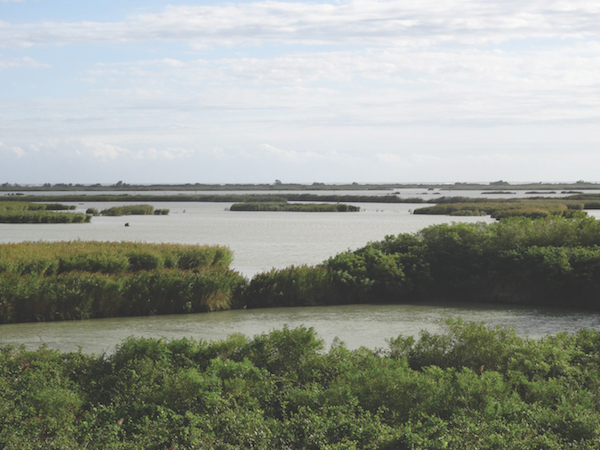
Nature reserve
The Gran Bosco della Mesola is a protected nature reserve. Visitors can cycle or walk around the forest, but inside is a further protected area where the red deer live. Park rangers take small groups by minibus inside the forest to see the deer. Of the 400 deer now in the park, I was lucky enough to see around 30. After a busy morning I was glad to stop at Osteria del Delta Torre Abate in Santa Giustina for lunch. I tried homemade confettura of caramelised onions, apple and pumpkin, tomato and apricot with local cheeses and crudo del Delta. Local wines with tagliatelle and deer ragù completed my lunch.
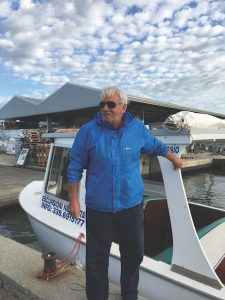
My final destination of the day was Gorino. There are three sections along the Po di Goro – Codigoro at the beginning of the River Goro, Mezzagoro halfway along the river and Goro at the mouth of the Delta. Gorino, or ‘little Goro’ is a fishing hamlet with one street of fishermen’s houses. The fishing port leads out into the Sacca di Goro, a lagoon of brackish water, reeds and islands. Clams and mussels are harvested in the shallow water of the lagoon.
I went out onto the lagoon in Alessio, Captain Doriano’s fishing boat. We went along a canal towards the Punta Maistra, the 1950s lighthouse and Isola dell’Amore, the final piece of land before the open sea. Canes and nets stacked up at the water’s edge show how sea bass are caught here. Stopping at the old lighthouse, which is now used as a bird watching tower, I could see the rough waves of the Adriatic Sea and the water birds across this dramatic lagoon.
Our Po Delta travel guide has all you need to plan your visit, from great places to eat and stay to the best sights and attractions
